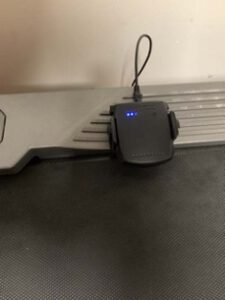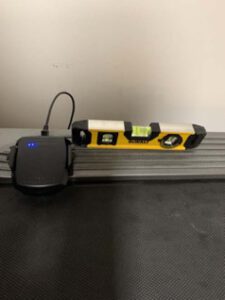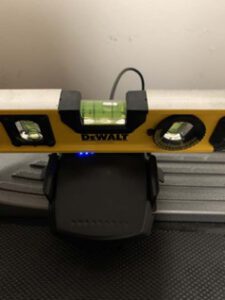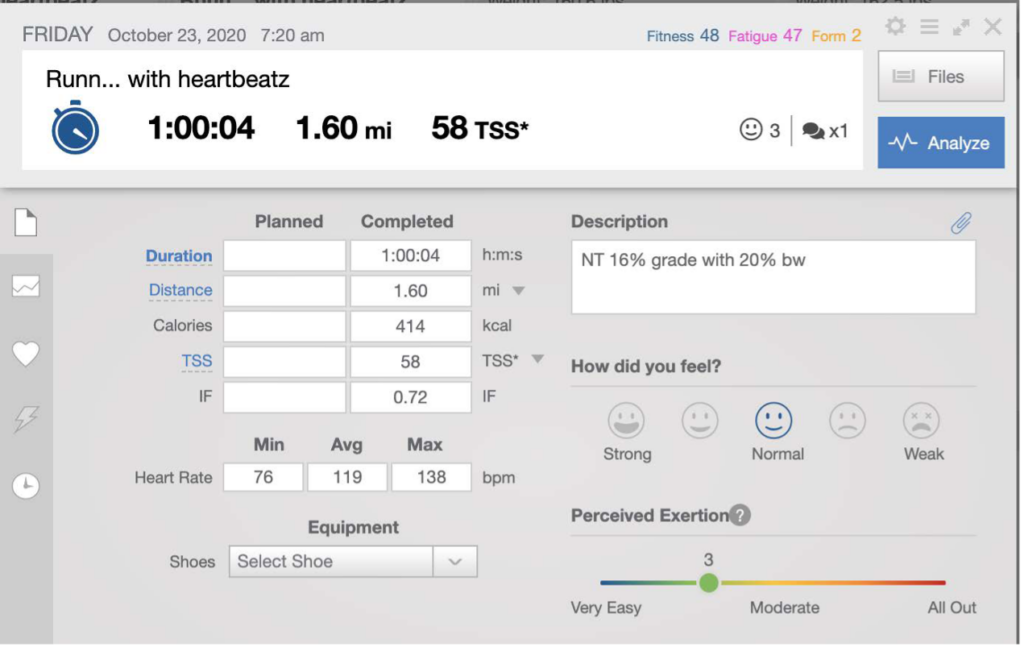Treadmill Season
By: Scott Johnston
Posted:
It’s cold and dark out there! Many of us have to sneak training time in before or after work. Weather or conditions may limit your options severely. Or, maybe you would just like to quantify and add more control to your workouts. Any of these reasons may force you to train indoors on a treadmill or an incline trainer (a treadmill that inclines much steeper than the 15% grade that most treadmills are limited to).
I own an old Nordic Track x11i incline trainer with a Concept 2 SkiErg mounted on the wall in front of it. This combo allows it to be used with 2 or all 4 limbs engaged. It gets a fair bit of use in the winter when conditions warrant training indoors.
Early on I discovered that the displayed readings of both incline and speed were radically inaccurate. At grades around 0-3% the belt on mine was moving 12% faster than the display indicated. To make matters worse that inaccuracy varies with the gradient and from day to day. That’s not a big deal if you are just trying to accumulate aerobic base volume where time and heart rate are all you might care about. But I’ve used my machine to train a number of top athletes doing high intensity work and wanted to be able to control the intensity through accurate measurement of speed and incline so we could progress the training load and make sure there was the proper response and improvement we were looking for. Here is a more detailed discussion of one of this type of workouts. https://evokeendurance.com/forums/topic/inclined-treadmill-and-stairmaster/.
If you’re doing quality sessions where the information from the machine is needed for controlling the work rate and monitoring your progress, getting reliable info is critical. If you have already spent several hundred dollars for a used one to several thousand dollars for one of the fanciest incline trainers, spending another hundred and about 30minutes to vastly improve its usefulness is kind of a no brainer.
The follow article was written by a reader whose name is lost now (if you recognize this as yours please let me know and I will gladly credit you) in response to a post a few years ago about treadmill training where I suggested he buy and install a Runn device on his treadmill. I’ll let his word take it from here.
So, I did what he suggested, and I purchased a Runn because both the speed and grade control on the NT incline trainers sucks (as it does on most treadmills).
Note that the [displayed] speed is probably not the speed of the belt, so your actual calculated climb rate will be different. My x11i runs +19% over the displayed speed and Scott J.’s runs +12%.” He also suggested “Try out a Runn. That way you can ignore the display and go by the speed the Runn broadcasts to your watch. I think this is what Scott J. has done.”
The Runn product is produced by North Pole Engineering. They have a number of products that fill gaps related to different types of exercise equipment. Runn is one of those, focused on making your sessions on treadmills more accurate. As Scott noted, NordicTrack treadmills have inherent inaccuracy (as do most), and Runn acts as a separate mechanism to allow you to record your speed and vertical during a workout. I purchased a Runn for $89 with a coupon I found online. It is a simple device to install. You put double sided tape on it and stick it on your treadmill on a flat spot. Next add some reflective stickers to the deck. It looks like this when installed.

There is no calibration needed for the unit. The only thing you have to ensure is that the unit is at the same angle as the treadmill deck, the unit does the rest. The cradle that you mount to the treadmill and that holds the unit allows some up/down and angle adjustments. You can see from the following pictures that I have the Runn at relatively the same angle as the treadmill deck. The cradle adjustment is fiddly, so this is a necessary step to ensure accuracy and not mentioned in the install instructions. You can also see that the NordicTrack deck is definitely not level.


Once you have this it is relatively simple to connect the unit, which broadcasts speed, incline and cadence to apps like Zwift via Bluetooth and wearable devices like Garmin via ANT+.
So now you have a real time accurate display of your workout. When I compared my results with the numbers Scott quoted, they were quite similar, about 20% difference average.
However, this is not a constant difference, otherwise you could skip the expense of $140 and just apply a correction factor. At the zero incline on my machine the Runn unit reports a 4.5 percent incline. This grows to about a 7 percent difference between the two sources at higher inclines. Further as you increase the incline, the variance between the actual speed and the unit’s display grows. The problem is that the NordicTrack is not able to keep the speed constant. The higher the incline, the more your legs push, especially if you wear a pack like I do (20% body weight). Your leg strength easily pushes the speed well beyond what the NordicTrack thinks it’s doing. At 25% incline the speed difference was up to 30%! A big difference.
On my most recent workout with the NordicTrack at 16% incline while doing an easy aerobic workout, the treadmill reported 957 feet elevation gain and 1.31 miles distance. The Runn reported 1417 feet elevation gain and 1.6 miles distance. What a difference.
The final piece to this puzzle is how to get this into Training Peaks with the least amount of effort. If you are like me, you don’t want to have to remember to manually export and import files between the apps. Unfortunately, the two apps don’t communicate. Enter a third app, Health Fit. Health Fit costs $3.99 and reads data from different apps and pushes the data to three platforms, one of which is Training Peaks. All you do is give Health Fit the correct permissions and it automatically transfers the data.

It took me a while to figure all this out but now it all seems to work transparently. I really feel like this is worthwhile doing. Losing almost 500 vertical feet in an hour workout is crazy. If you are more fit than I am (which is probably most of you) the results would be even more skewed.
Now this does not matter if you are in a vertical rich environment like Colorado, but I live in the vertically challenged city of Austin Texas. The NordicTrack X22I incline treadmill can be purchased used at very reasonable prices (I got mine off Craigslist for $600 with 4 hours use on it). It has a very special feature, an incline up to 40%. In flat Austin it is a crucial piece of my training regimen. The addition of Runn with Heartbeatz allows me to more effectively train and more accurately track my workouts. So, for $140 it was worth it for me. Hope this helps anyone else looking at the NordicTrack Incline Trainer for their home gym.